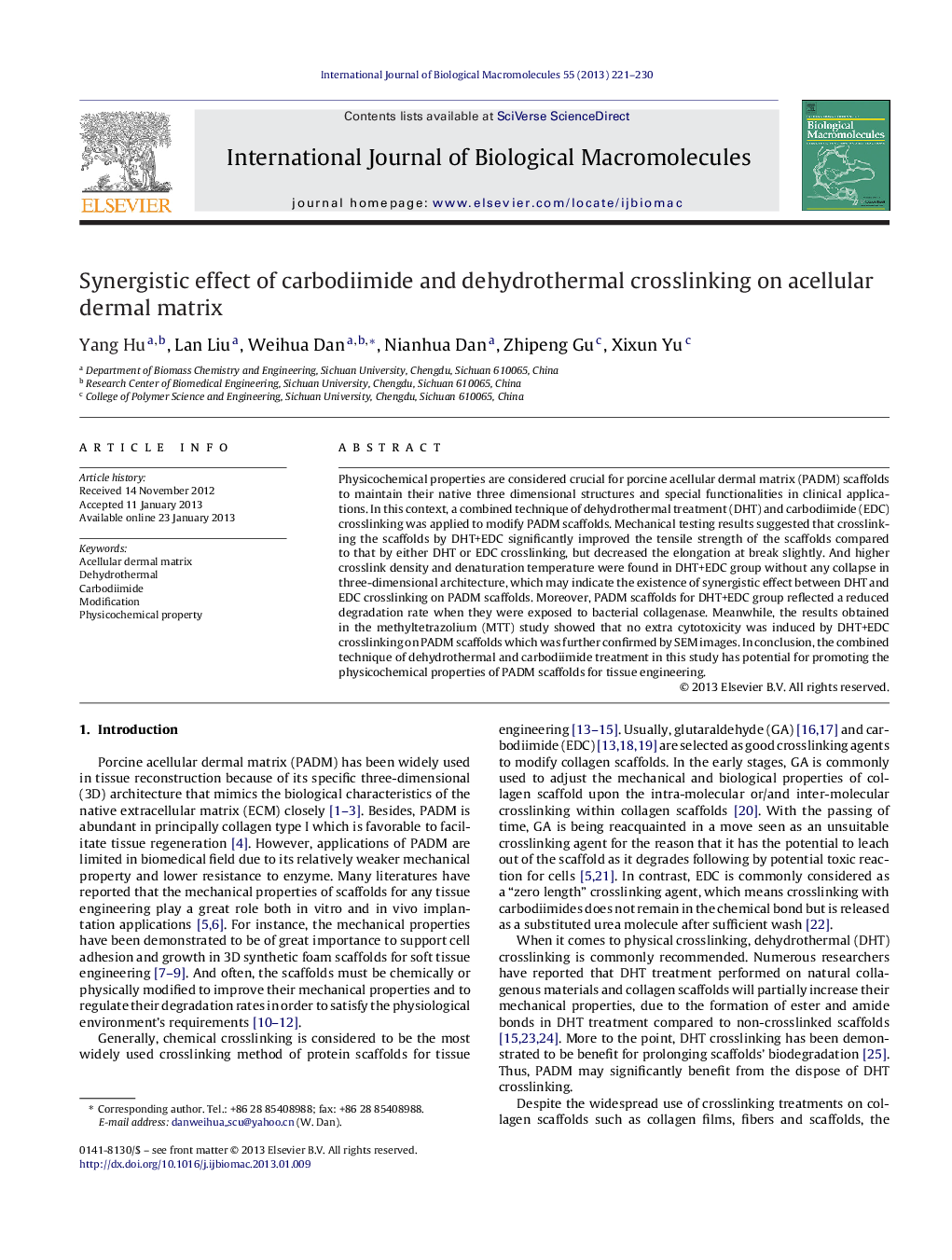| Article ID | Journal | Published Year | Pages | File Type |
|---|---|---|---|---|
| 1987049 | International Journal of Biological Macromolecules | 2013 | 10 Pages |
Physicochemical properties are considered crucial for porcine acellular dermal matrix (PADM) scaffolds to maintain their native three dimensional structures and special functionalities in clinical applications. In this context, a combined technique of dehydrothermal treatment (DHT) and carbodiimide (EDC) crosslinking was applied to modify PADM scaffolds. Mechanical testing results suggested that crosslinking the scaffolds by DHT+EDC significantly improved the tensile strength of the scaffolds compared to that by either DHT or EDC crosslinking, but decreased the elongation at break slightly. And higher crosslink density and denaturation temperature were found in DHT+EDC group without any collapse in three-dimensional architecture, which may indicate the existence of synergistic effect between DHT and EDC crosslinking on PADM scaffolds. Moreover, PADM scaffolds for DHT+EDC group reflected a reduced degradation rate when they were exposed to bacterial collagenase. Meanwhile, the results obtained in the methyltetrazolium (MTT) study showed that no extra cytotoxicity was induced by DHT+EDC crosslinking on PADM scaffolds which was further confirmed by SEM images. In conclusion, the combined technique of dehydrothermal and carbodiimide treatment in this study has potential for promoting the physicochemical properties of PADM scaffolds for tissue engineering.
► A synergistic effect was found between dehydrothermal and carbodiimide treatment. ► The physicochemical properties of PADM were benefited from the synergistic effect. ► The three-dimensional architecture of PADM still remained after crosslinking. ► No extra cytotoxicity was introduced into PADM scaffolds after crosslinking.
